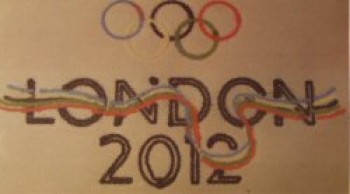News
Powders dancing to the music from art to part
28 November 2005

Dr Shoufeng Yang and Professor Julian Evans from the Department of Materials have devised a new method for multi materials solid freeforming fabrication (SFF). The source of this idea came from the ancient art of the Navajo Indian's Sand Paintings. Sand paintings, also called dry paintings, were used in ceremonies for harvests and healing. A similar art called Mandala sand painting is used by Tibetan monks. They used metal funnels called chak-pur to place grains of coloured sand to make elaborate patterns. The vibrations of the chak-pur when grated with a metal rod cause the sand to flow like liquid.
Dr Joseph Pegna from the Ecole Polytechnique de Montreal originally borrowed the Navajo's sand painting for powder dispensing and Dr Yang came up with the original idea of automatic sand painting. Instead of the chak-pur, Dr Yang and Professor Evans use glass capillaries as funnels, and transmit music to the capillaries through loud speakers to generate the vibrations. With delicate computer control, the capillaries work as valves. They switch the powder flow on and off and they control the rate of flow by changing frequency and amplitude of the sound. The technical aim of this technique is the on-line deposition and mixing of dry powders. Through computer control, different powders can be arranged at any site spatially, line by line, and layer by layer, inside a container. A movie showing the powders dancing to the music can be found in Dr Yang's website (link below). This project started out as a quest for solid freeforming of mixed materials. With your computer printer, you can click "print" and get a two dimensional coloured image. With solid freeforming you click "print" and get a three dimensional object. But up to now it has only been possible to get a 3D object in one material; monochrome, if you like. With this method you get a 3D object with different materials. What is more, you can get an object in which gentle gradients in composition avoid sharp discontinuities from one material to the next; so called "functional gradients" in technical jargon. By arranging many capillaries and speakers on a multi-axis table, an "orchestra" of powder valves can be controlled independently. Each valve can be loaded with different powders. The powders can be simultaneously mixed and delivered onto a platform, one layer at a time, to build up complex 3D patterns, according to the program in the computer. It means you can design not just the shape on the computer but specify the composition at all points throughout the shape. There is no other way to do this.
So this is a method taken from an ancient art and applied in engineering. But can still be used in the graphic arts as the sand painting shows.
Automatic sand painting to support the London 2012 bid, demonstrating the capability of multi material dry powder deposition. There are five colours in the sand painting and complex curves which mean up to five different powders could be delivered on a so
Dr Joseph Pegna from the Ecole Polytechnique de Montreal originally borrowed the Navajo's sand painting for powder dispensing and Dr Yang came up with the original idea of automatic sand painting. Instead of the chak-pur, Dr Yang and Professor Evans use glass capillaries as funnels, and transmit music to the capillaries through loud speakers to generate the vibrations. With delicate computer control, the capillaries work as valves. They switch the powder flow on and off and they control the rate of flow by changing frequency and amplitude of the sound. The technical aim of this technique is the on-line deposition and mixing of dry powders. Through computer control, different powders can be arranged at any site spatially, line by line, and layer by layer, inside a container. A movie showing the powders dancing to the music can be found in Dr Yang's website (link below). This project started out as a quest for solid freeforming of mixed materials. With your computer printer, you can click "print" and get a two dimensional coloured image. With solid freeforming you click "print" and get a three dimensional object. But up to now it has only been possible to get a 3D object in one material; monochrome, if you like. With this method you get a 3D object with different materials. What is more, you can get an object in which gentle gradients in composition avoid sharp discontinuities from one material to the next; so called "functional gradients" in technical jargon. By arranging many capillaries and speakers on a multi-axis table, an "orchestra" of powder valves can be controlled independently. Each valve can be loaded with different powders. The powders can be simultaneously mixed and delivered onto a platform, one layer at a time, to build up complex 3D patterns, according to the program in the computer. It means you can design not just the shape on the computer but specify the composition at all points throughout the shape. There is no other way to do this.
So this is a method taken from an ancient art and applied in engineering. But can still be used in the graphic arts as the sand painting shows.
Automatic sand painting to support the London 2012 bid, demonstrating the capability of multi material dry powder deposition. There are five colours in the sand painting and complex curves which mean up to five different powders could be delivered on a so
Updated by: Victoria Wells

